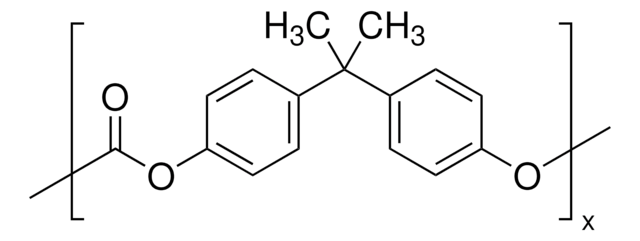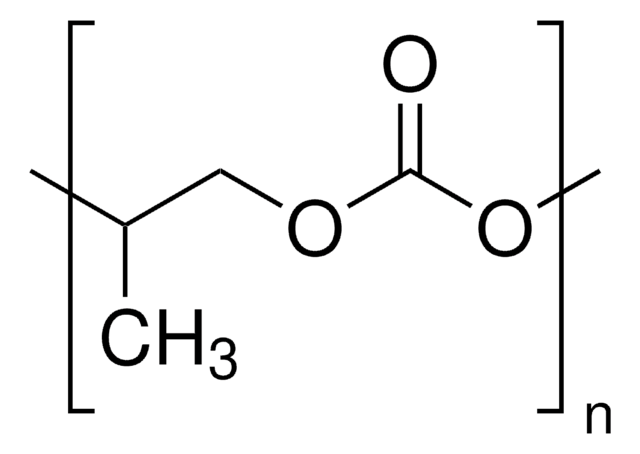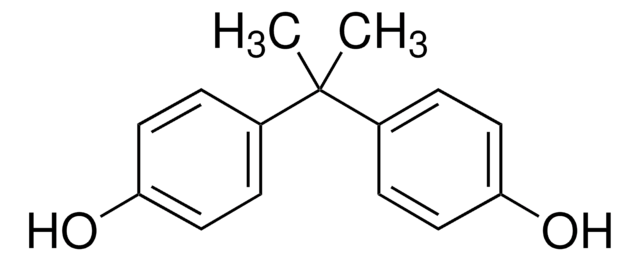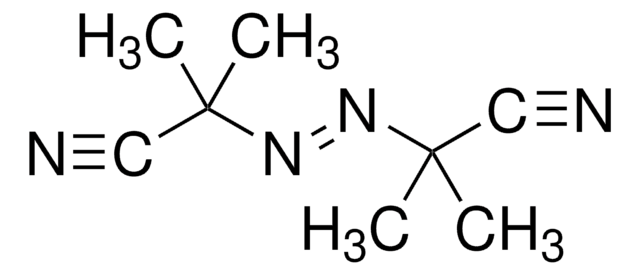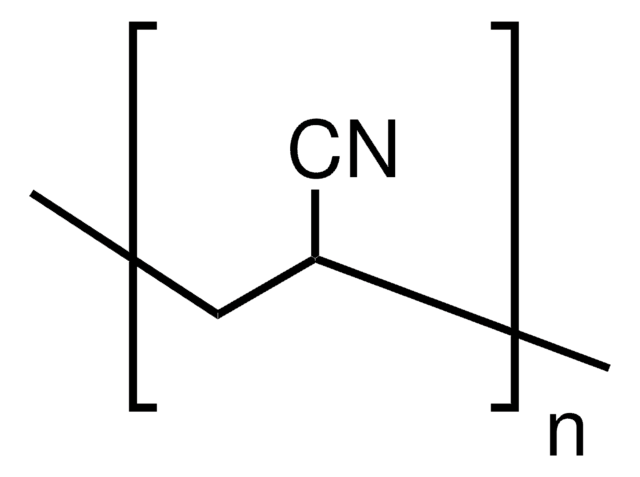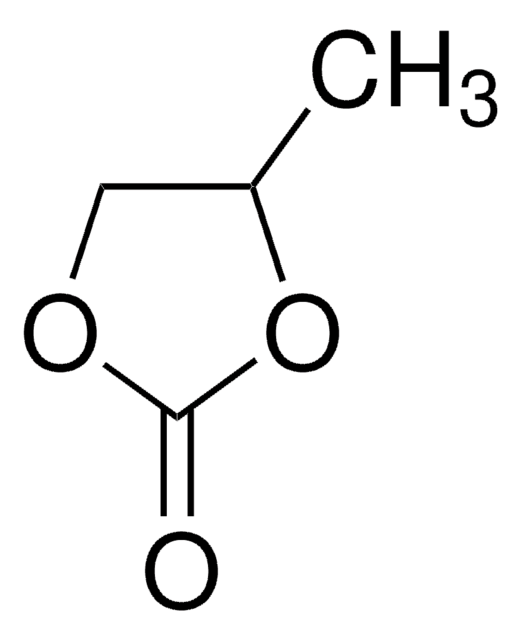181625
Poly(Bisphenol A carbonate)
average Mw ~45,000 by GPC
Synonyme(s) :
4,4′-Dihydroxydiphenyl-2,2-propane carbonate polymer, Bisphenol A carbonate homopolymer, Carbonic acid-4,4′-dihydroxydiphenyl-2,2-propane copolymer, Poly(dian carbonate), Poly[2,2-bis(4-hydroxyphenyl)propane carbonate]
About This Item
Produits recommandés
Poids mol.
average Mw ~45,000 by GPC
Niveau de qualité
Indice de réfraction
n20/D 1.585
Température de transition
Tg 150 °C
Tm 267 °C
Densité
1.2 g/mL at 25 °C (lit.)
Chaîne SMILES
CC(C)(c1ccc(O)cc1)c2ccc(O)cc2
InChI
1S/C15H16O2.CH2O3/c1-15(2,11-3-7-13(16)8-4-11)12-5-9-14(17)10-6-12;2-1(3)4/h3-10,16-17H,1-2H3;(H2,2,3,4)
Clé InChI
XSXWYGABGYBZRM-UHFFFAOYSA-N
Informations sur le gène
mouse ... Esr1(13982)
rat ... Ar(24208)
Vous recherchez des produits similaires ? Visite Guide de comparaison des produits
Description générale
Application
- To prepare transparent nanocomposites for optical applications.
- To study the wettability of graphene.
Code de la classe de stockage
11 - Combustible Solids
Classe de danger pour l'eau (WGK)
WGK 3
Point d'éclair (°F)
Not applicable
Point d'éclair (°C)
Not applicable
Équipement de protection individuelle
Eyeshields, Gloves, type N95 (US)
Faites votre choix parmi les versions les plus récentes :
Déjà en possession de ce produit ?
Retrouvez la documentation relative aux produits que vous avez récemment achetés dans la Bibliothèque de documents.
Les clients ont également consulté
Notre équipe de scientifiques dispose d'une expérience dans tous les secteurs de la recherche, notamment en sciences de la vie, science des matériaux, synthèse chimique, chromatographie, analyse et dans de nombreux autres domaines..
Contacter notre Service technique